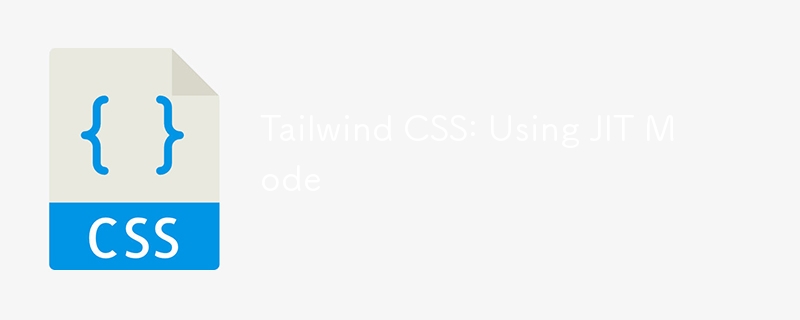

Tailwind CSS is a popular utility-first CSS framework that is gaining widespread adoption in the web development community. It offers a unique approach to styling websites by providing a comprehensive set of pre-built, reusable components. One of the most recent and exciting additions to Tailwind CSS is its Just-In-Time (JIT) mode, which greatly enhances the developer experience. In this article, we will take a closer look at JIT mode in Tailwind CSS, its advantages and disadvantages, and its key features.
One of the major advantages of using JIT mode in Tailwind CSS is faster compilation times. Traditional Tailwind CSS requires the entire CSS file to be generated during the build process, resulting in longer build times. However, JIT mode generates only the CSS classes that are actually used in the HTML, reducing the overall file size and minimizing build times significantly. Additionally, JIT mode allows for dynamic utility classes, meaning that changes made to the HTML will be instantly reflected in the CSS without the need for a full rebuild.
The main downside of using JIT mode is that it requires additional dependencies and configuration, which can be intimidating for beginners. The use of dynamic utility classes can also result in a larger CSS file and potential performance issues if not used carefully.
Faster Compilation Times: JIT mode speeds up the development process by generating CSS on the fly, only including the styles that are actually used.
Dynamic Utility Classes: Developers can see their style changes reflected immediately without regenerating the entire stylesheet.
JIT Cache: JIT mode includes a caching mechanism that stores the generated CSS, reducing build times even further.
Support for Modern CSS Properties: It supports advanced CSS features like Grid and Custom Properties (CSS Variables), enhancing the capabilities of Tailwind CSS.
<!-- HTML file --> <div class="text-red-500 hover:text-red-700"> Hello, world! </div>
This example shows how simple it is to use dynamic utility classes that change color on hover, demonstrating the flexibility and immediate feedback provided by JIT mode.
In conclusion, JIT mode in Tailwind CSS is a game-changer for web developers, providing a more efficient and streamlined approach to styling websites. Its advantages clearly outweigh its disadvantages, making it a must-try for anyone using Tailwind CSS. With its powerful features and continuous development, JIT mode is set to revolutionize the way we use CSS in modern web development.
The above is the detailed content of Tailwind CSS: Using JIT Mode. For more information, please follow other related articles on the PHP Chinese website!
 How to change c language software to Chinese
How to change c language software to Chinese
 Introduction to the opening location of win8 running
Introduction to the opening location of win8 running
 What are the data conversion methods in golang?
What are the data conversion methods in golang?
 How to center the web page in dreamweaver
How to center the web page in dreamweaver
 How to solve invalid syntax in Python
How to solve invalid syntax in Python
 Check in virtual location on DingTalk
Check in virtual location on DingTalk
 How to set a scheduled shutdown in UOS
How to set a scheduled shutdown in UOS
 After the computer is turned on, the monitor shows no signal
After the computer is turned on, the monitor shows no signal




